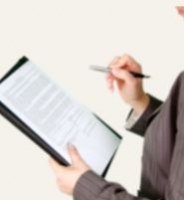
By Anne Davis, director of professional standards at the Institute of Financial Accountants [1]
If
the words self-assessment and tax returns fill you with dread, then we've got
some tips from the Institute of Financial Accountants to make the process as
smooth as possible.
1. Do you need to do one?
First check whether you need to submit a self-assessment (SA) tax return. Just because HMRC has not asked you to submit one, does not mean that you don't have to. You are responsible for telling HMRC if you think you need to complete a return and for paying any tax due that year.
Generally speaking, you must submit a tax return if you are or have been self-employed (sole trader and working for yourself), you are a partner in a business, or you are a company director that has income not taxed under PAYE. You must also submit a tax return to claim certain types of tax relief, for example, higher rate taxpayers claiming back additional tax relief on your pension contributions.
2. Get an online account
The deadline for filing a paper self-assessment tax return has been and gone, so you will have to submit your self-assessment tax return online. First timers need to register with HMRC using your Unique Taxpayer Reference (UTR) and they will send you an activation code in the post within 10 working days (21 days if you're abroad).
3. Have your records ready to hand
If you are self-employed, you will need to keep a record of all your income and expenses, investments and savings including business invoices and receipts, bank/building society interest statements, dividends and any other untaxed income received such as rental income, as well as contributions made to pension schemes and charitable gift aid donations. You can record this on Excel or opt for suitable software.
If you are self-employed and employed, you will also need details of your employment income from your P60 or P45 (if you have changed jobs during the tax year) and details of your benefits and expenses during employment which can be found on your P11D.
If you want to get further ahead, sign up for Making Tax Digital for income tax and use software to keep business records digitally and send income tax updates to HMRC instead of filing an online self-assessment tax return, before it becomes mandatory in 2021.
4. Claim allowable expenses and tax relief
If you are self-employed, reduce your tax bill by deducting allowable business expenses such as office costs and overheads, travel costs, clothing expenses, staff costs, stock, financial costs and marketing. You can also reasonably apportion expenses which have both business and personal use including utility bills if working from home.
Remember to claim your tax relief; for example, tax relief for higher rate tax payers on pension contributions, tax reliefs on certain types of investments and gift aid charitable donations.
5. Don't leave it to the last minute and ask for help
Late filing comes with a £100 penalty and last year 735,258 taxpayers filed their returns on 31 January (the final day) and 731,186 taxpayers missed the deadline completely. If you are struggling, contact a professional accountant with membership of a professional body such as The Institute of Financial Accountants. As well as reducing stress, they can often legally minimise your tax bill too.
